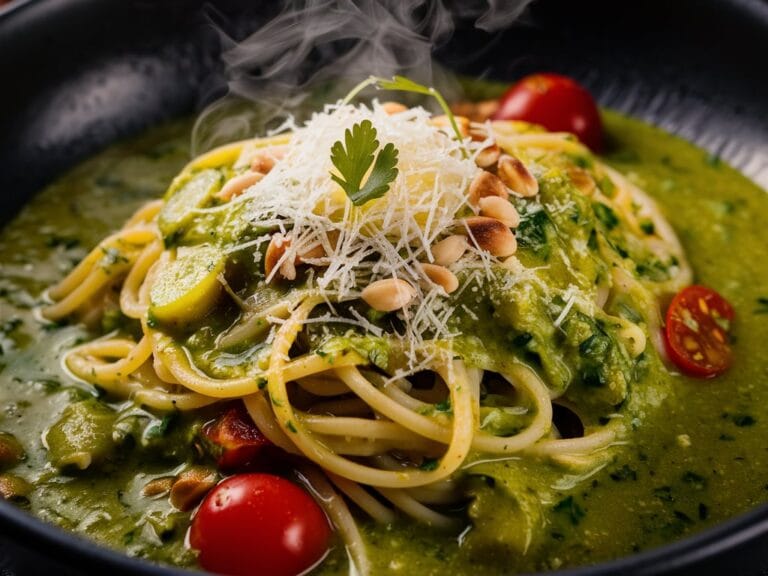What is a Boston Roll Made Of?
Sushi has a rich history dating back centuries in Japan, yet it has evolved significantly over time as it spread across the world. One of the most popular adaptations of sushi in the United States is the Boston roll. Unlike traditional sushi that often features raw fish like tuna or salmon, the Boston roll is a fusion dish that replaces raw fish with poached shrimp, making it more approachable for those who may not be ready for raw seafood.
In this article, we will explore the origins of the Boston roll, its unique ingredients, how it compares to other popular sushi rolls, and how you can make it at home. We will also dive deep into the nutritional benefits of the ingredients and the cultural significance of this Americanized sushi roll. So, let’s get started and answer the question: What is a Boston roll made of?
The Origins of Sushi: From Japan to America
To fully understand what a Boston roll is, it’s essential to trace the journey of sushi from its humble beginnings in Japan to its global popularity today. Sushi originated as a way to preserve fish by fermenting it in rice. However, the version of sushi we know today evolved during the Edo period (1603–1868) in Japan, where fresh fish was paired with vinegared rice and served as fast food in bustling Tokyo markets.
As sushi spread to the West in the 20th century, it underwent significant adaptations to cater to different palates. The California roll—featuring imitation crab, avocado, and cucumber—is one of the earliest examples of Americanized sushi. Similarly, the Boston roll emerged as a variation for those seeking a sushi experience without raw fish. By using poached shrimp instead, the Boston roll became a hit, especially for those on the East Coast.
Sushi and Fusion Cuisine
Sushi has always been a highly adaptable dish. As it moved across cultures, chefs began incorporating local ingredients to create unique flavors. This fusion approach has given birth to countless sushi roll varieties, each offering its own twist on the traditional Japanese recipe. The Boston roll is a perfect example of how fusion cuisine can bridge culinary traditions, creating something that retains its roots while appealing to a new audience.
How the Boston Roll Got Its Name
The Boston roll is believed to have originated on the East Coast of the United States, particularly in sushi restaurants in Boston. The use of poached shrimp (often locally sourced from the Atlantic Ocean) instead of raw fish likely contributed to the name. Over time, the Boston roll has become a staple in sushi menus across America, loved for its mild yet flavorful ingredients.
What is a Boston Roll?
A Boston roll is an Americanized sushi roll that features poached shrimp as its main protein, along with a blend of other fresh ingredients that provide a mix of textures and flavors. The roll is wrapped in nori seaweed, which holds together sushi rice, avocado, cucumber, and sometimes a garnish of tobiko (flying fish roe).
Here’s a closer look at what typically goes into a Boston roll:
- Poached Shrimp: The shrimp is lightly cooked, offering a sweet and tender bite.
- Sushi Rice: Short-grain rice that’s seasoned with rice vinegar, sugar, and salt for a tangy flavor.
- Nori Seaweed: A sheet of dried seaweed that wraps the roll, giving it a slightly salty, umami flavor.
- Cucumber: Adds a refreshing crunch to balance out the richness of the other ingredients.
- Avocado: Provides a creamy texture and mild flavor, which complements the shrimp.
- Tobiko (Flying Fish Roe): Often used as a garnish, adding a burst of texture and a salty, savory finish.
These ingredients come together to create a sushi roll that’s light, flavorful, and perfect for those who prefer cooked seafood over raw fish.
Why Poached Shrimp?
One of the key distinctions of the Boston roll is its use of poached shrimp instead of raw seafood. This makes the roll more accessible to people who might be hesitant to try sushi with raw fish. The shrimp is poached (gently boiled) for just a few minutes, ensuring it’s fully cooked but still tender and juicy.
For many, the use of poached shrimp also offers a more familiar flavor profile. Shrimp is a staple in many Western dishes, and its mild, sweet flavor pairs perfectly with the other ingredients in the Boston roll. Additionally, shrimp is considered a sustainable seafood option, which aligns with growing consumer preferences for environmentally friendly food choices.
If you’re interested in exploring more shrimp-based dishes, check out this recipe for shrimp garlic butter—a savory option that also complements sushi!
Ingredients in a Boston Roll: A Deep Dive
Let’s break down each ingredient in the Boston roll to understand why it’s included and what it contributes to the overall taste and texture of the roll.
1. Sushi Rice
- Sushi rice is the foundation of nearly all sushi rolls. It is a special type of short-grain rice that becomes sticky when cooked, allowing it to hold together the other ingredients in the roll.
- The rice is seasoned with a mixture of rice vinegar, sugar, and salt. This seasoning gives the rice its signature tangy and slightly sweet flavor.
- The sticky texture of sushi rice is essential for ensuring the roll holds its shape when sliced.
How to Make Perfect Sushi Rice:
- Rinse the rice thoroughly until the water runs clear.
- Cook the rice in slightly less water than you would for regular rice (this helps it achieve the right sticky consistency).
- Once cooked, season the rice with a mixture of rice vinegar, sugar, and salt while it’s still warm.
- Let the rice cool slightly before using it to make sushi rolls.
2. Nori Seaweed
- Nori is the thin sheet of dried seaweed that wraps around the outside of the Boston roll. It’s a crucial element that holds the roll together while adding a subtle briny flavor.
- Nori also provides essential nutrients, including vitamin A, vitamin C, and iodine, which are important for thyroid function.
3. Poached Shrimp
- The poached shrimp is the star ingredient of the Boston roll. The shrimp is cooked by gently boiling it for a few minutes, ensuring it remains tender and juicy.
- The shrimp’s mild flavor works well with the other ingredients, and its slightly sweet taste pairs especially well with the creamy avocado and tangy sushi rice.
4. Cucumber
- Cucumber adds a refreshing crunch to the roll. Its cool, crisp texture balances the richness of the avocado and the mild sweetness of the shrimp.
- Cucumber is also low in calories and high in vitamin K and antioxidants, making it a healthy addition to the roll.
5. Avocado
- Avocado provides a creamy texture and mild flavor that complements the other ingredients in the Boston roll. It’s also packed with healthy fats, specifically monounsaturated fats that are good for heart health.
- In addition to its texture and flavor, avocado is a great source of vitamins C, E, K, and B6, as well as potassium.
6. Tobiko (Flying Fish Roe)
- Tobiko is a type of fish roe that’s often used to garnish sushi rolls. It adds a crunchy texture and a salty, briny flavor that enhances the overall taste of the roll.
- Tobiko comes in different colors—orange, black, red, and green—depending on the seasoning used. Orange tobiko is the most common and adds a pop of color to the roll.
- It’s also high in protein, omega-3 fatty acids, and other nutrients, making it a nutritious addition to the roll.
The Boston Roll vs. Other Popular Sushi Rolls
Now that we’ve explored the ingredients of the Boston roll, let’s compare it to some other popular sushi rolls. While all sushi rolls share some common ingredients, each type of roll has its own unique features that set it apart.
Boston Roll vs. California Roll
The California roll is one of the most well-known sushi rolls in America, and it shares many similarities with the Boston roll. Both rolls use ingredients like avocado, cucumber, and nori. However, the key difference lies in the seafood:
- Boston Roll: Uses poached shrimp as the main protein.
- California Roll: Uses imitation crab (also known as surimi).
Both rolls are fully cooked, making them ideal for sushi newcomers who may not be comfortable eating raw fish. The California roll tends to be sweeter due to the imitation crab, while the Boston roll has a slightly more savory flavor because of the shrimp.
Boston Roll vs. Philadelphia Roll
The Philadelphia roll is another popular sushi roll that features smoked salmon, cream cheese, and cucumber. While the Boston roll is light and refreshing, the Philadelphia roll is richer due to the cream cheese and smoked salmon.
Here’s a comparison:
- Boston Roll: Features poached shrimp, avocado, and cucumber.
- Philadelphia Roll: Features smoked salmon, cream cheese, and cucumber.
Both rolls have a distinct flavor profile, with the Boston roll being milder and the Philadelphia roll having a smokier, richer taste.
How to Make a Boston Roll at Home
Making a Boston roll at home is easier than you might think, and it’s a fun way to enjoy sushi without having to visit a restaurant. Below is a detailed step-by-step guide on how to make this delicious roll.
Ingredients:
- Sushi Rice: 2 cups of short-grain sushi rice (rinsed)
- Rice Vinegar: 1/4 cup
- Sugar: 2 tablespoons
- Salt: 1 tablespoon
- Nori Sheets: 4 sheets
- Poached Shrimp: 1/2 pound, peeled and deveined
- Cucumber: 1, thinly sliced into matchsticks
- Avocado: 1, sliced
- Tobiko: 2 tablespoons (optional for garnish)
- Soy Sauce: For serving
- Wasabi: For serving
- Pickled Ginger: For serving
Instructions:
Step 1: Prepare the Sushi Rice
- Rinse the sushi rice in cold water until the water runs clear. This removes excess starch, which helps prevent the rice from becoming too sticky.
- Cook the rice using a rice cooker or on the stove. Use slightly less water than you would for regular rice to ensure the rice is firm and sticky.
- While the rice is cooking, prepare the seasoning by combining rice vinegar, sugar, and salt in a small pot. Heat the mixture over low heat until the sugar dissolves.
- Once the rice is cooked, transfer it to a large bowl and gently fold in the vinegar mixture while the rice is still warm. Let the rice cool to room temperature before using it to make sushi.
2: Poach the Shrimp
- Bring a pot of salted water to a boil. Add the peeled and deveined shrimp and cook for 3-4 minutes, or until they turn pink and opaque.
- Immediately transfer the shrimp to an ice bath to stop the cooking process. Once cooled, pat the shrimp dry with a paper towel.
3: Assemble the Boston Roll
- Place a sheet of nori on a bamboo sushi mat with the shiny side facing down.
- Wet your hands with water and spread a thin layer of sushi rice evenly over the nori, leaving about 1 inch at the top free of rice.
- Flip the nori so that the rice is facing down. In the center of the nori, place a few slices of poached shrimp, cucumber, and avocado.
- Using the bamboo mat, carefully roll the sushi from the bottom, applying gentle pressure to keep the roll tight.
- Slice the roll into bite-sized pieces using a sharp knife. For a decorative touch, sprinkle tobiko on top of the roll.
4: Serve
Serve the Boston roll with soy sauce, wasabi, and pickled ginger on the side. For an extra burst of flavor, drizzle the roll with spicy mayo or another favorite sauce.
Nutritional Value of a Boston Roll
One of the reasons the Boston roll is so popular is that it’s not only delicious but also relatively healthy. Here’s a closer look at the nutritional benefits of the key ingredients:
Poached Shrimp:
- Shrimp is a lean source of protein, containing about 24 grams of protein per 100 grams.
- It is also low in calories (approximately 85 calories per 100 grams) and rich in essential nutrients like vitamin B12, selenium, and omega-3 fatty acids.
Avocado:
- Avocado is known for being high in healthy monounsaturated fats, which are good for heart health.
- It is also rich in fiber, potassium, and vitamins C, E, and K.
Cucumber:
- Cucumber is low in calories and provides a good source of hydration due to its high water content.
- It’s also rich in antioxidants and vitamin K.
Nori Seaweed:
- Nori is an excellent source of iodine, which is essential for thyroid function.
- It also contains vitamins A, C, and calcium, contributing to overall health.
Calorie Count:
On average, a Boston roll contains between 280 and 370 calories per roll, depending on the ingredients and portion sizes. For a lighter version, you can substitute white rice with brown rice or reduce the amount of rice used in the roll.
If you’re looking to incorporate more seafood into your diet, you might also enjoy bibimbap chicken recipes that offer another fusion of flavors with an Asian twist.
Frequently Asked Questions (FAQs)
Is a Boston roll raw?
No, the Boston roll contains poached shrimp, which is fully cooked. This makes it an excellent choice for those who are hesitant about eating raw seafood.
What’s the difference between a Boston roll and a Philadelphia roll?
While the Boston roll features poached shrimp, the Philadelphia roll is made with smoked salmon and cream cheese, giving it a richer flavor and a creamy texture.
Can I make a vegetarian Boston roll?
Yes! You can easily modify the Boston roll to be vegetarian by replacing the poached shrimp with tofu, tempura vegetables, or even mango for a sweet twist.
How many calories are in a Boston roll?
A typical Boston roll contains between 280 and 370 calories, depending on the amount of rice and the toppings used. Adding sauces like spicy mayo can increase the calorie count.
What’s the best sauce for a Boston roll?
The classic accompaniment for sushi is soy sauce, but you can also serve a Boston roll with wasabi, pickled ginger, or even spicy mayo for an extra kick of flavor.
Conclusion: Why You Should Try the Boston Roll
The Boston roll is a fantastic example of fusion cuisine, blending the best of traditional Japanese sushi with ingredients that cater to the American palate. Whether you’re new to sushi or looking for a fully cooked option, the Boston roll offers a delicious and approachable way to enjoy sushi.
Its combination of poached shrimp, creamy avocado, crunchy cucumber, and tobiko creates a balanced flavor profile that is both satisfying and refreshing. Plus, with its relatively low calorie count and high nutritional value, the Boston roll is a great addition to any sushi lover’s repertoire.
So, why not give it a try at home? With the detailed recipe provided, you can easily recreate this popular sushi roll and enjoy it anytime you like. If you’re looking for more sushi inspiration, check out other sushi varieties like the crunchy roll for another delicious sushi experience!







